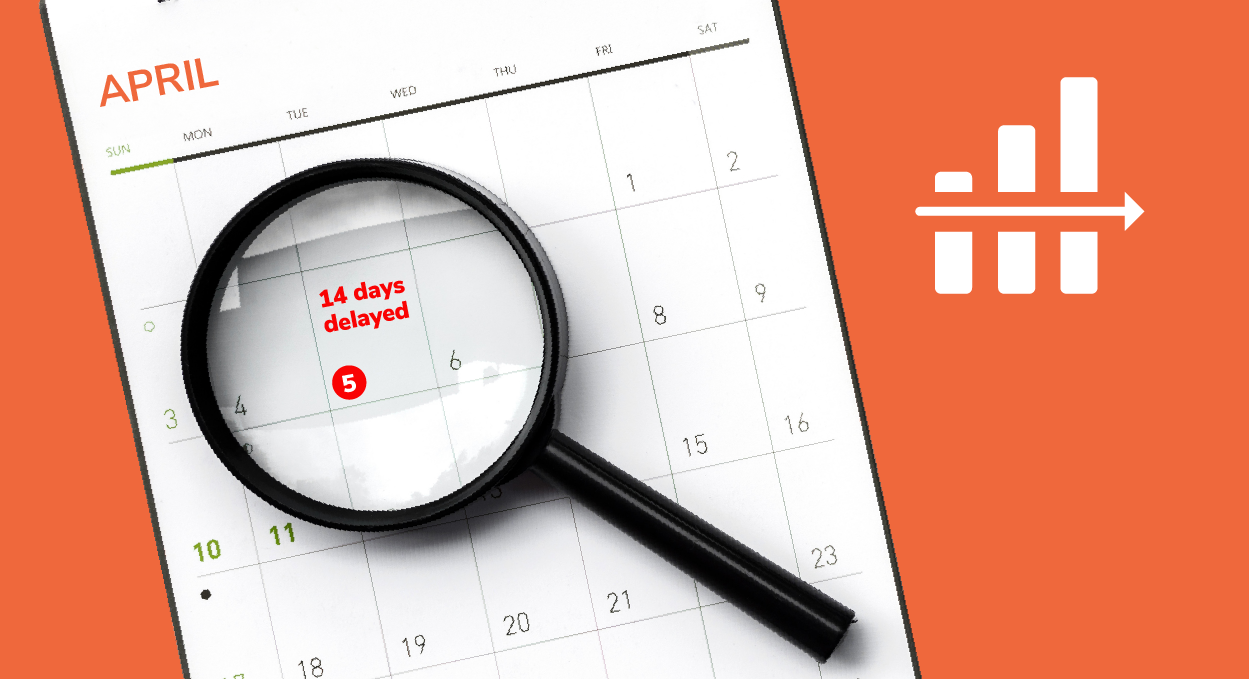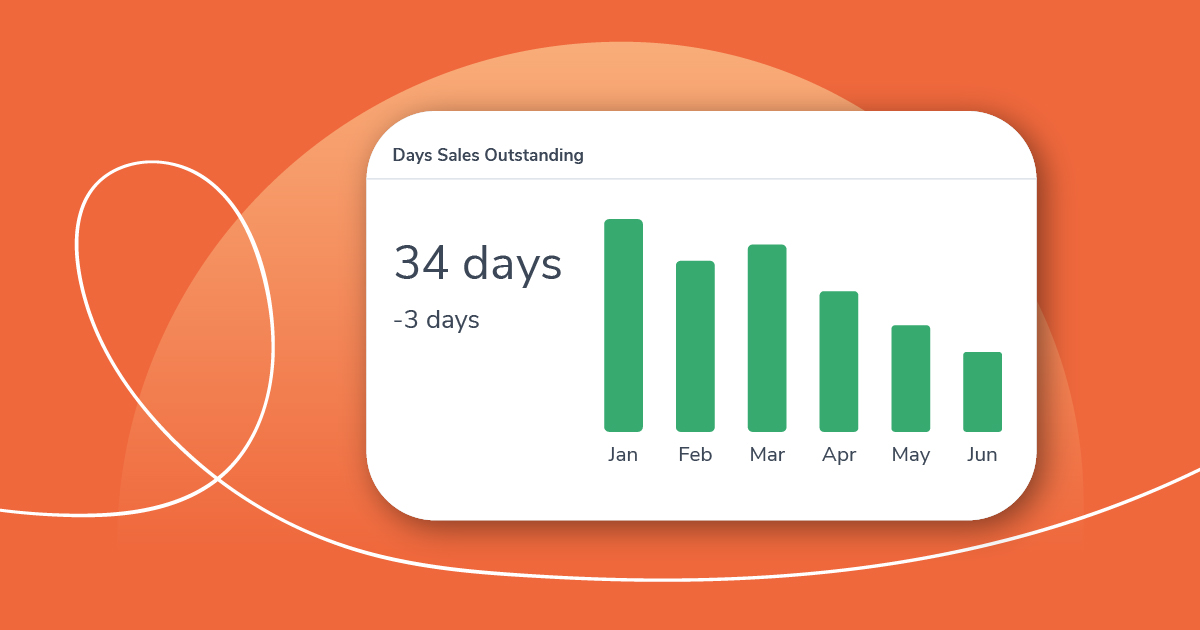In the world of business, it's essential to know where your company is at financially.
One metric you may come across is Days Sales Outstanding (DSO). This measures how long it takes a company to collect cash on its outstanding sales.
In this blog post, we'll explain what DSO is, how to calculate it, and why it matters. We'll also provide tips on how to reduce your DSO and improve your cash flow!
What does DSO mean?
DSO means "Days Sales Outstanding". It's a metric that measures the average number of days it takes a company to collect payments on its outstanding credit sales. To calculate DSO, you divide the number of days in a period by the number of invoices that were issued during that same period. The period can be any length of time but is typically one month.
For example, let's say your company had 100 invoices in January, and it took an average of 30 days to collect payments on those invoices.
That means your DSO for January would be 30 days (100 invoices / 30 days = 30).
The Day Sales Outstanding formula is part of a larger formula known as the Cash Conversion Cycle which is the total of the Days Inventory Outstanding (DIO) plus the Days Sales Outstanding (DSO) minus the Days Payable Outstanding (DPO).
Why does DSO matter?
Tracking DSO is important because it's a good indicator of a company's financial health and helps you understand the company’s cash flow. Calculating the average number of days to receive payment can help you track the frequency of delayed payments and outstanding receivables.
A high DSO means it's taking a long time to collect cash, which can put a strain on the company's cash flows. On the other hand, a low DSO means the company is collecting payments quickly, which is a good sign of financial health. DSO can also be a good indicator of how well a company is doing at extending credit to customers.
For example, if a company has a high DSO, it may be because it's extending too much credit to customers who are having difficulty paying their bills. This slows cash flow regardless if a company has a high average accounts receivable.
Conversely, if a company has a low DSO, it may be because it's not extending enough credit to customers. Extending too much or too little credit can both have negative consequences for a company, so it's important to strike a balance. That's why DSO is such an important metric for businesses to track.
Let’s take a look at the Days Sales Outstanding formula to help you better understand how it relates to the accounts receivable process and your company’s cash flow.
What is the formula for Days Sales Outstanding?
To calculate Days Sales Outstanding, you’ll need figures such as your accounts receivable balance and total credit sales from your company’s balance sheet. When calculating DSO, cash sales are not taken into consideration–only credit sales.
Calculate Days Sales Outstanding
DSO is calculated by dividing a company's accounts receivable by its average daily sales:
Days Sales Outstanding = (Accounts Receivable / Net Credit Sales) x Number of days
For example, let's say that a company has $100,000 in accounts receivable and it makes $500,000 in sales per day.
That company's DSO would be 100,000/500,000, or 20 days.
DSO formula example
DSO calculations can get pretty complex. Here’s another example of the DSO calculation formula.
Company ABC has the following average accounts receivables and sales for June:
Receivables on June 30th: $100,000
Sales for the month of June: $500,000
Average daily sales for the month of June: 500,000/30 days in June = $16,667 per day
DSO calculation: 100,000/16,667 = approximately six days
As you can see from this example, the DSO formula is a relatively simple metric to calculate given sufficient data such as the total accounts receivable during a period.
What is a good Day Sales Outstanding?
There is no definitive answer to this question, as it varies from industry to industry.
However, as a general rule of thumb, a DSO of 45 days or less is considered to be good. This is because it indicates that the company is collecting its average accounts receivables relatively quickly.
A DSO of 45 days or more is considered to be poor, as it indicates that the company is taking too long to collect its receivables. This can create a cash flow problem and make it difficult to maintain good financial health.
Why is reducing Days Sales Outstanding important?
There are a few reasons why reducing average DSO is important:
It can improve cash flow
The sooner you receive payment for a sale, the sooner you have cash available to reinvest in your business. Your company’s cash flow is crucial for businesses, as it allows them to pay their own bills on time and avoid taking out loans.
Reducing DSO can improve relationships with customers
If you're constantly chasing customers for payment, it's not going to do wonders for your relationship with them. In fact, they may start to view you as a nuisance rather than a valuable supplier.
If you can identify customers and their outstanding payments clearly, it smoothes out business operations and ensures customers pay on time.
It can improve your business's credit score
Your DSO is one of the factors that creditors will look at when considering whether to extend credit to your business. A high DSO could make them think twice about lending you money, whereas a low DSO could give them the confidence they need to lend you the money you need.
It can help you manage your cash flow more effectively
If you know how much money you're likely to have coming in each month, it makes it a lot easier to manage your outgoings and make sure you don't run into any cash flow problems.
It can give you an insight into your business's financial health
Your average DSO is a good indicator of how quickly your customers are paying their invoices. If it's high, it could be a sign that there are problems with your credit control procedures or that your customers are finding it difficult to pay their bills.
As you can see, there are a number of reasons why measuring your DSO is important. It's not just a number that you should calculate and then forget about. It's something that you should keep an eye on and try to improve where possible.
How does DSO impact your business?
There are a number of ways in which DSO can impact your business, both positively and negatively:
Positively:
A lower DSO means that you're getting paid quicker and, as a result, have more working capital available to invest back into your business. It indicates that your company can quickly convert credit sales which helps you grow faster and be more profitable.
A low DSO value can also help improve your relationships with your suppliers as they'll see that you're good at paying your bills on time. This could lead to them giving you better terms in the future or offering early payment discounts.
Negatively:
A high DSO value can put a strain on your company’s cash flows, making it difficult to meet other financial obligations. This can quickly snowball into bigger problems if not managed properly.
A high DSO number suggests that your company’s collection process needs to be improved. It can also damage your relationships with suppliers as they may see you as a high-risk customer. This could lead to them charging you more for goods and services or even refusing to do business with you altogether.
How to reduce your DSO
There are a few things you can do to reduce your DSO and improve your cash flow:
Review credit sales terms with customers and shorten them if possible
Credit terms are the number of days that a customer has to pay their invoices. By reducing your credit terms, you can reduce your DSO.
Invest in technology to automate accounts receivable
Automated credit control platforms like Chaser can help you to keep on top of payments and chase late invoices automatically by tracking payment status and sending polite emails and SMS reminders on your behalf.
Streamlining collection processes can free up time for you and your team so that you can focus on other areas of the business. It can also lead to improved customer satisfaction.
Offer multiple payment options and payment terms
Giving your customers more ways to pay means you have more ways to collect payment. When customers start comparing companies, they’ll likely choose businesses that have more methods of collecting cash and clearer payment terms to improve their experience.
Outsource your credit control function
This can free up time for you and your team to focus on other areas of the business, plus you can benefit from the expertise of professional credit controllers.
Chaser's outsourced credit control services are significantly more cost-effective than in-house teams while offering a flexible and proactive service.
Carry out regular credit checks on new and existing customers
Credit checking will help you identify customers that are likely to leave unpaid invoices. Avoiding risky customers will help to improve cash flow and avoid a higher DSO.
Offer discounts for early payment
Discounts for early payments can incentivise customers to pay their invoices sooner and help to improve your cash flow. Consider sending payment reminders early so there is a longer time period for customers to pay. Most customers will appreciate the discount and it could lead to higher customer retention.
Put a policy in place for late-paying customers
This could involve charging interest on late payments or suspending credit facilities. By having a policy in place, you can enforce it consistently and fairly.
It’s important to start understanding your Days Sales Outstanding ratio and how it’s affected by your credit sales. At the end of the day, calculating DSO and reducing it is all about improving your cash flow. By taking some or all of the above steps, you can get paid faster and have more working capital available to keep your business running smoothly.
A vital business metric
DSO is an important metric for businesses to track as it can have a big impact on cash flow and profitability. While there's no magic number that all businesses should aim for, reducing your DSO can have many positive benefits.
Here are some key takeaways for understanding Days Sales Outstanding and how to calculate DSO.
- Days Sales Outstanding (DSO) is the average number of days between making a sale and receiving payment.
- The Days Sales Outstanding formula is the average accounts receivable divided by the total credit sales multiplied by the number of days in the period being measured.
- A high DSO indicates a long time period between sales and payment, potentially resulting in cash flow problems.
- A low DSO indicates the company has a low average number of days between sales and receiving payments.
- DSO can be determined on a monthly, quarterly, or annual basis.
If your DSO is high, take steps to bring it down by improving your invoicing and collections processes. To find out more about how Chaser can help you get paid faster, book a demo or start your free trial today!




